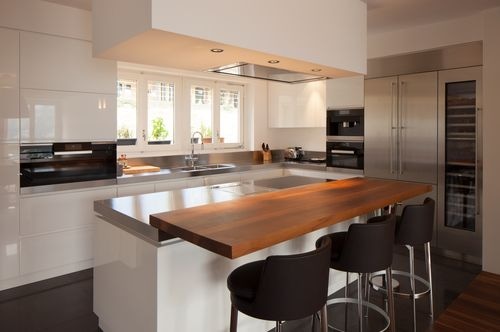Wine Cooler Buying Guide
Posted on February 27, 2017 By Alison P
Whether your hobby is to collect exotic or rare vintages, or you just enjoy having plenty of wine on hand for impromptu guests, proper wine storage is a smart investment for you. If you are serious about the quality of your wine, a wine cooler will help support its preservation.
Here are some quick tips to help you decide which wine cooler is best for you!
Bottle Capacity & Location
This should be the first thing you consider. Are you a big-time wine collector, or just a casual wine lover? Wine coolers come in various capacities. The depth of your collection ultimately determines which cooler you should be looking at. Small coolers can store as low as 6 bottles, while larger models can accommodate around 100 to 200 bottles. Generally, it's a good idea to buy a wine cooler that can hold at least double the number of wine bottles you currently have, as once you have a cooler you'll find yourself purchasing wine more often.
You also need to consider the space you have in your home. Think about where you are planning on keeping your wine cooler and be sure the one you would like to purchase will fit in that space.
Single vs. Dual Zone Wine Coolers
Are you looking to exclusively store away wines of one variety? If yes, the single zone cooler is what you're looking for. Single zone wine coolers have one cooling temperature and a storage space that's undivided. This kind of cooler is ideal for storing either red or white wine, but not both. White wine is stored at a temperature ranging 46-56 degrees Fahrenheit, while red needs to be stored at a temperature between 58-68 degrees Fahrenheit.
If your collection is made up of a mixture of red and white wines, then a dual zone wine cooler is a better choice for you. Dual zone wine coolers feature two separate compartments, allowing you to maintain two distinct and separate temperature zones inside the cooler.
 Built-in vs. Free Standing Wine Coolers
Built-in vs. Free Standing Wine Coolers
If you're looking for a chiller that will fit perfectly under your kitchen cabinet with no ventilation issues, a built in wine cooler is what you want. If you are looking to show off your wine collection in the dining area, the freestanding wine cooler is the right choice for you.
Construction
Most wine coolers are standalone units that can be built-in later on. Larger wine fridges have front-exhaust capabilities, but those that do not have a compressor need to have airflow around the unit so as to operate efficiently and not overheat (at least 3" all around).
Exterior Construction
Stainless steel products complement most kitchen appliances, even if those appliances are black or white. Most wine cooler doors are comprised of UV-filtered double-paned glass. The UV filter prevents wine from seeing direct sunlight and altering the biology of the wine by heat exposure. Double-paned glass helps keep the internal temperature at a desired output. Despite internal cooling mechanisms, the unit should not be stored in direct sunlight or in temperatures exceeding 75 degrees Fahrenheit, as this will cause the motor on the wine cooler to work harder and more often.
Interior Construction
Wine coolers have various types of shelving. Basic fridges tend to have fixed chrome-wire shelves, while higher-end ones use sturdier wood racks or wood-framed wire grids. Some shelves even roll out to make it easier to read labels and remove bottles.
Most wine coolers have an interior light just like a refrigerator would have. Having an interior light is beneficial when trying to read wine labels. Some coolers even light up when the door is closed, allowing your collection to be displayed.
Thermoelectric vs. Compressor
Thermoelectric coolers are vibration free, which results in less instability among the sediments within the wine bottles you're storing. Thermoelectric wine coolers are not completely silent, as internal fans are needed to distribute the cold air within the cooler. These fans produce some noise, but they are substantially quieter than compressor units.
Thermoelectric wine coolers are more energy efficient as well. Since there are less moving parts, there is less energy drawn. However, this cooling system does have its limitations: they can only cool the wine about 20 degrees less than the room temperature where the unit will be kept, and their compressor coolers are not restricted by temperature surrounding the unit.
The type you choose should depend on how you plan to use it. If you are going to purchase a free standing cooler, that holds two cases or less, and plan on keeping it in a room that doesn't get too warm, then thermoelectric cooling is a good choice for you. If the room you're using is warmer and you want a larger collection, you should use a compressor cooler. Most built-in models are compressor cooled.
Security Locks
Several higher-end models offer locking capabilities on wine coolers. Whether it's with a keypad or a physical key, wine is secured inside a fridge and cannot be tampered with. Private collections, reserves, and rare vintages are best kept under lock and key so they are never confused with common table wines or everyday varieties.
Buying a wine cooler can be exciting. Whether it's being able to finally display your wine safely, or simply having a practical unit to store your bottles, there are dozens of factors to consider and models to compare. At P.C. Richard and Son we have a great selection of quality wine coolers in a range of sizes and prices. Shop wine coolers now!